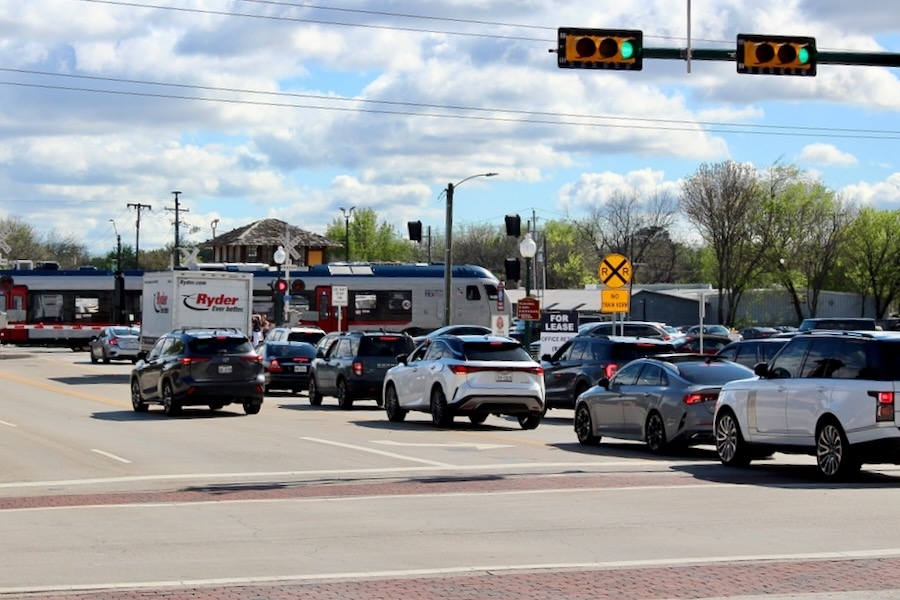Climate plan to reduce Tarrant County’s air pollutants
Climate plan to reduce Tarrant County's air pollutants Community Impact


The Air Quality Improvement Plan for Tarrant County

The air residents of Tarrant County breathe could put their health at risk, according to the State of the Air 2024 report from the American Lung Association.
But residents in Grapevine, Colleyville, and Southlake could breathe cleaner air in as little as five years following the development of a new plan to reduce regional emissions.
The Priority Climate Action Plan
The North Central Texas Council of Governments (NCTCOG) submitted its Priority Climate Action Plan to the Environmental Protection Agency (EPA) on March 1, as the first step in an effort to improve air quality throughout North Texas.
The priority plan is one piece of the Dallas-Fort Worth Air Quality Improvement Plan, a collaborative effort between the NCTCOG’s transportation department, and environment and development department.
Tarrant County Commissioner Gary Fickes, whose Precinct 3 includes Grapevine, Colleyville, and Southlake, signed a letter of support for the plan last year and said the county has access to additional grant funding as part of this initiative.
About the Plan
The plan covers the next five years and has 42 actionable measures. These measures include initiatives related to funding infrastructure for low-emission and electric vehicles, incentivizing commercial and industrial solar projects, and promoting clean energy finance programs.
If all measures from the plan are fully implemented, the region could see a reduction in ground-level ozone, which has been rising in North Texas for the last three years. Ground-level ozone is a harmful air pollutant and the main ingredient of smog, according to the EPA.
The plan addresses emissions and air quality improvement measures across five sectors:
- Transportation
- Solid waste management
- Agriculture, forestry, and land use
- Energy
- Water, wastewater, and watershed
What’s Happening
Despite improvements made over the past 20-30 years, North Texas is still not meeting the attainment standard for ground-level ozone set by the EPA. The region’s population growth may have contributed to stalls in air quality improvement.
One result of being out of the attainment standard is that while most Texas residents will benefit next year from House Bill 3297, which exempts drivers from getting their vehicles inspected, Tarrant County will continue to require this.
Why It Matters
Clean air is associated with good health because it is free of pollutants that can cause irritations in the respiratory tract. Better local air quality can improve the health of the population. Grapevine, Colleyville, and Southlake all have policies in place to help protect trees from development, as trees are one way to help reduce ground-level ozone.
Some groups of Tarrant County’s total population of 2.15 million people are especially vulnerable to illnesses and death from exposure to ozone or other types of air pollution:
- Children under age 18: 543,108
- Adults age 65 and older: 265,948
- Pediatric asthma: 34,509
- Adults with asthma: 125,852
What’s Next
With the five-year plan published, the council of governments will make every effort to collaborate with the region in implementing improvement measures. The NCTCOG can apply for more grant funding to help implement measures from the plan. The association submitted a $199 million grant request to the EPA. If awarded, the money would be used to implement 19 measures listed in the plan. These would support clean vehicle initiatives, improve bicycle and pedestrian infrastructure, and enhance regional transit services.
The EPA is expected to announce grant recipients in October.
SDGs, Targets, and Indicators
1. Which SDGs are addressed or connected to the issues highlighted in the article?
- SDG 3: Good Health and Well-being
- SDG 7: Affordable and Clean Energy
- SDG 11: Sustainable Cities and Communities
- SDG 13: Climate Action
- SDG 15: Life on Land
2. What specific targets under those SDGs can be identified based on the article’s content?
- SDG 3.9: By 2030, substantially reduce the number of deaths and illnesses from hazardous chemicals and air, water, and soil pollution and contamination.
- SDG 7.2: By 2030, increase substantially the share of renewable energy in the global energy mix.
- SDG 11.6: By 2030, reduce the adverse per capita environmental impact of cities, including by paying special attention to air quality and municipal and other waste management.
- SDG 13.2: Integrate climate change measures into national policies, strategies, and planning.
- SDG 15.2: By 2020, promote the implementation of sustainable management of all types of forests, halt deforestation, restore degraded forests, and substantially increase afforestation and reforestation globally.
3. Are there any indicators mentioned or implied in the article that can be used to measure progress towards the identified targets?
- Air quality improvement measures across five sectors: transportation, solid waste management, agriculture, forestry and land use, energy, and water, wastewater, and watershed.
- Reduction in ground-level ozone concentration.
- Initiatives related to funding infrastructure for low-emission and electric vehicles, incentivizing commercial and industrial solar projects, and promoting clean energy finance programs.
- Number of deaths and illnesses related to air pollution.
- Share of renewable energy in the energy mix.
- Per capita environmental impact of cities, including air quality.
- Integration of climate change measures into policies and planning.
- Sustainable management of forests, deforestation rates, afforestation, and reforestation.
Table: SDGs, Targets, and Indicators
| SDGs | Targets | Indicators |
|---|---|---|
| SDG 3: Good Health and Well-being | 3.9: By 2030, substantially reduce the number of deaths and illnesses from hazardous chemicals and air, water, and soil pollution and contamination. | Number of deaths and illnesses related to air pollution. |
| SDG 7: Affordable and Clean Energy | 7.2: By 2030, increase substantially the share of renewable energy in the global energy mix. | Share of renewable energy in the energy mix. |
| SDG 11: Sustainable Cities and Communities | 11.6: By 2030, reduce the adverse per capita environmental impact of cities, including by paying special attention to air quality and municipal and other waste management. | Per capita environmental impact of cities, including air quality. |
| SDG 13: Climate Action | 13.2: Integrate climate change measures into national policies, strategies, and planning. | Integration of climate change measures into policies and planning. |
| SDG 15: Life on Land | 15.2: By 2020, promote the implementation of sustainable management of all types of forests, halt deforestation, restore degraded forests, and substantially increase afforestation and reforestation globally. | Sustainable management of forests, deforestation rates, afforestation, and reforestation. |
Copyright: Dive into this article, curated with care by SDG Investors Inc. Our advanced AI technology searches through vast amounts of data to spotlight how we are all moving forward with the Sustainable Development Goals. While we own the rights to this content, we invite you to share it to help spread knowledge and spark action on the SDGs.
Fuente: communityimpact.com

Join us, as fellow seekers of change, on a transformative journey at https://sdgtalks.ai/welcome, where you can become a member and actively contribute to shaping a brighter future.







